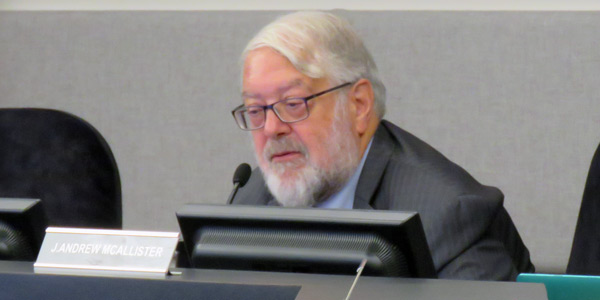By Jason Fordney
California utilities and state agencies are cooperating on developing plans to manage the effects of global climate change on the electricity grid, an issue that looms especially large for the state.
Rising sea levels, reduced snowpack, more wildfires and extreme weather events such as drought and severe rain are predicted for California, which experts say will be more affected by global warming than other states because of its warm climate and extensive coastline.
Partnership between state officials, local government and utilities was the theme at a Tuesday workshop hosted by the California Energy Commission. Participants discussed the physical impacts of climate change on the grid, geophysical changes, temperature trends and the challenges facing vulnerable populations.
State law requires the CEC to assess and forecast the state’s energy production, supply and demand, and develop policies that conserve resources. The agency is studying climate change impacts on the energy grid as part of its 2017 Integrated Energy Policy Report process, which is updated every year and adopted every two years.
Pacific Gas and Electric is a critical infrastructure company with 16 million customers and a “critical responsibility,” said Melissa Lavinson, vice president of federal affairs and policy. The company is getting more requests from local governments for information on its efforts to prepare for climate change, she said.
PG&E favors a regional approach to the issue that would help with coordination, rather than going community by community. The utility has proposed a “climate resilience clearing house” to aggregate information and a regional governing body to coordinate local governments.
“We are far from the end of this process. We are at the beginning of this journey,” she said.
San Diego Gas & Electric is in the midst of a “Climate Vulnerability and Adaptation Options” study consisting of both electric grid and natural gas tracks, Sempra Energy Meteorologist Brian D’Agostino said. The electric analysis looks only at the effect of the rising water level and flooding on the coast where many of the company’s power plants are located, while the natural gas program also looks at climate hazards inland. The report also highlights downstream impacts on customers, electricity demand and the economy.
PG&E is working with the University of California, Berkeley and the California Department of Water Resources on a program to deploy wireless remote sensors to study moisture, temperatures and snowpack and more effectively manage hydro assets, said Gary Freeman, the company’s principal hydrologist. The company closely studies weather and increasing “atmospheric rivers,” which are columns of moisture that occur in the atmosphere and can dump large amounts of rain.
Atmospheric rivers hundreds of miles wide occur in California because of the Pacific Ocean and mountains that cool the air as it travels inland. The formations provide up to 50% of the annual precipitation on the West Coast, and their increasing activity is another example of how climate change affects grid planning and reliability in a region with extensive hydroelectric capacity.
Gov. Jerry Brown in April 2015 signed an executive order that set 2030 greenhouse gas reduction targets that were recently codified into law. (See California Lawmakers Extend Cap-and-Trade.) The state has also developed online tools providing climate change data, including climateconsole.org and cal-adapt.org.




